88v8
Member
- Messages
- 3,129
- Location
- Glorious Gloucs
So, here we are at the back of the cottage, high summer. Beautiful. Galega, perennial sweet pea, angel's fishing rods...
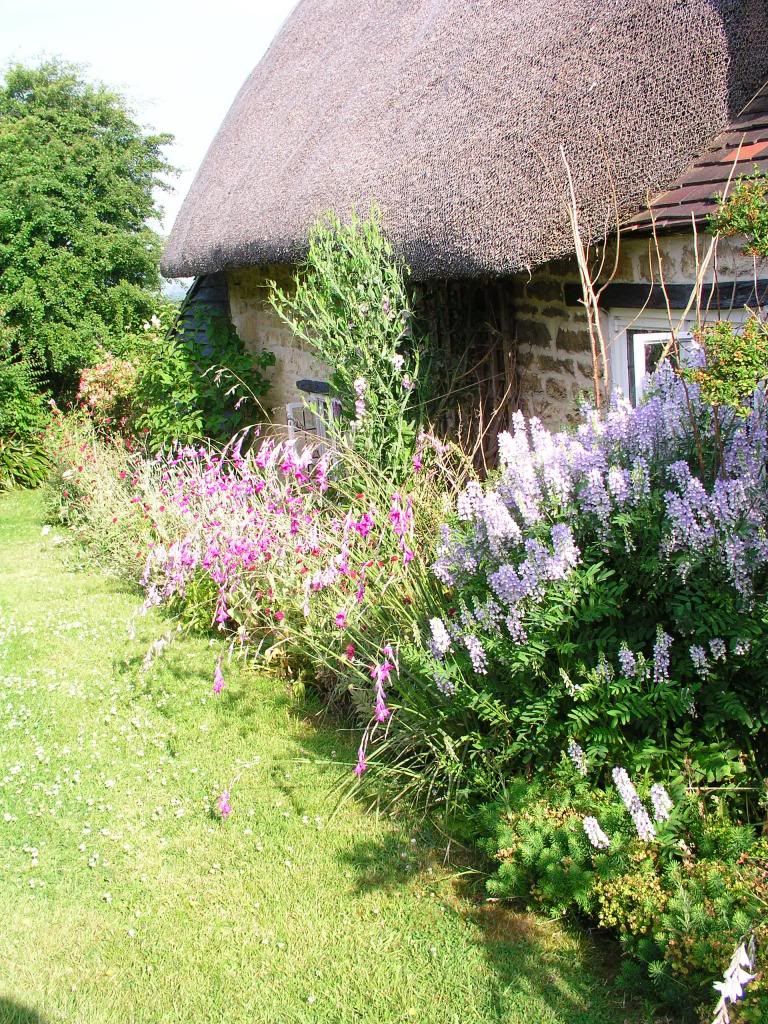
But all is not well.
On the right, the ground is a foot above floor level, to the left it's two feet. Damp, mould.
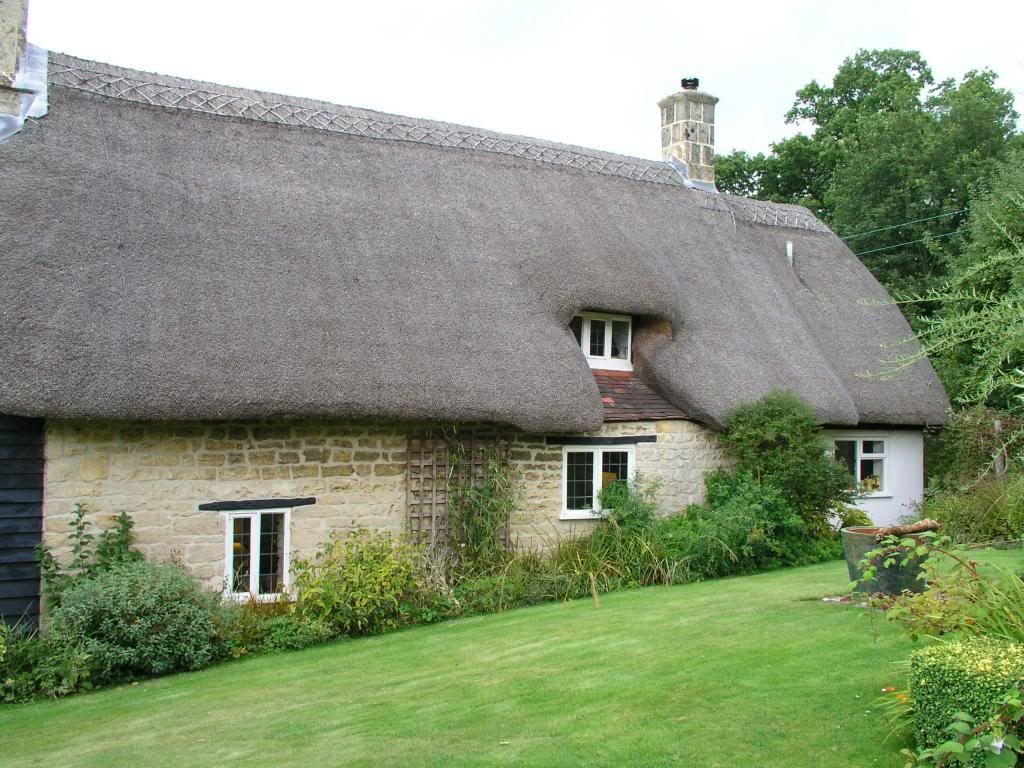
Not as bad as it might be, the walls are in effect two separate drystone walls with rubble infill, so damp transmission is to an extent prevented.
However, despite great reluctance to destroy this lovely flowerbed, we removed what we could in the way of plants - 20 year-old sweet peas can't be moved - and then we set about digging it out. Or rather, three chaps did, one shovelling, two carrying wheelbarrows up and down the steps, about 10 tons of soil to go out, then 12 tons of stone and pea and shingle to come in. The pea and shingle is because we're putting a land drain along the drip line, and the stone is for a drystone retaining wall.
And none of the three blokes is Polish.
Along the back we find an old 6" land drain, full of earth and roots. And the remains of a cobble path, stone-on-edge, that had been put in later, and then adjacent to the house a 3" land drain, apparently still active. Luckily, we had a dry week, next week not so good.
Obviously, we wanted to get down to internal floor level so the land drain on the left had to be taken up. Here are some of the 6" and 3" clay pipes.
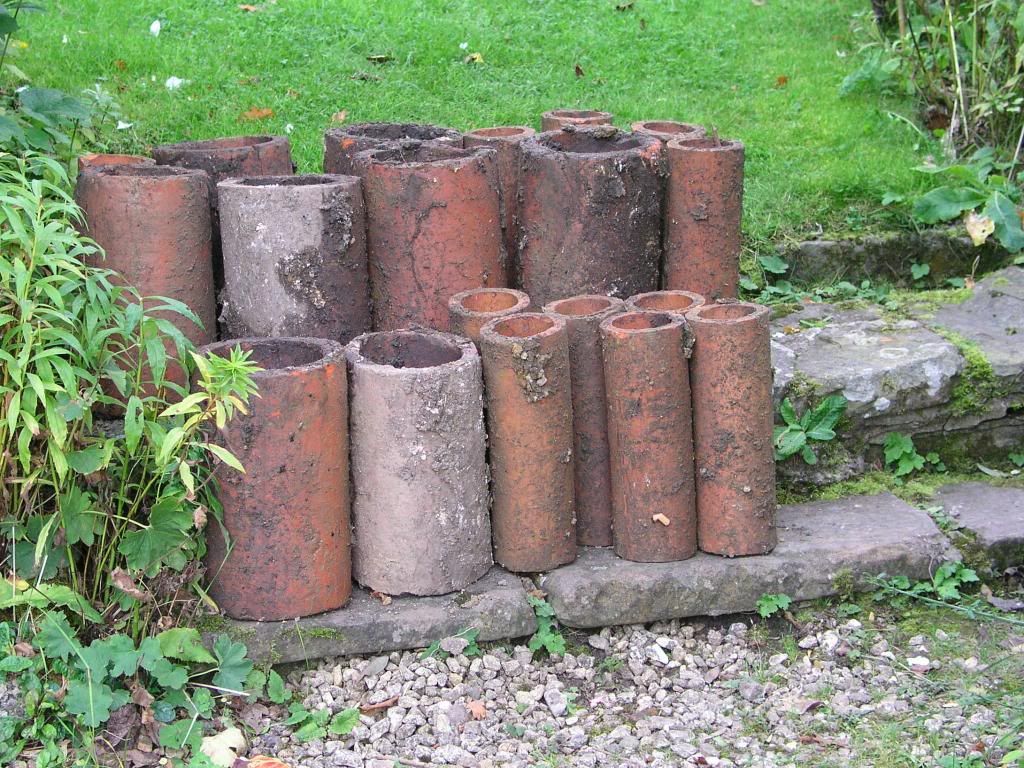
Then the 3" had to be repiped.
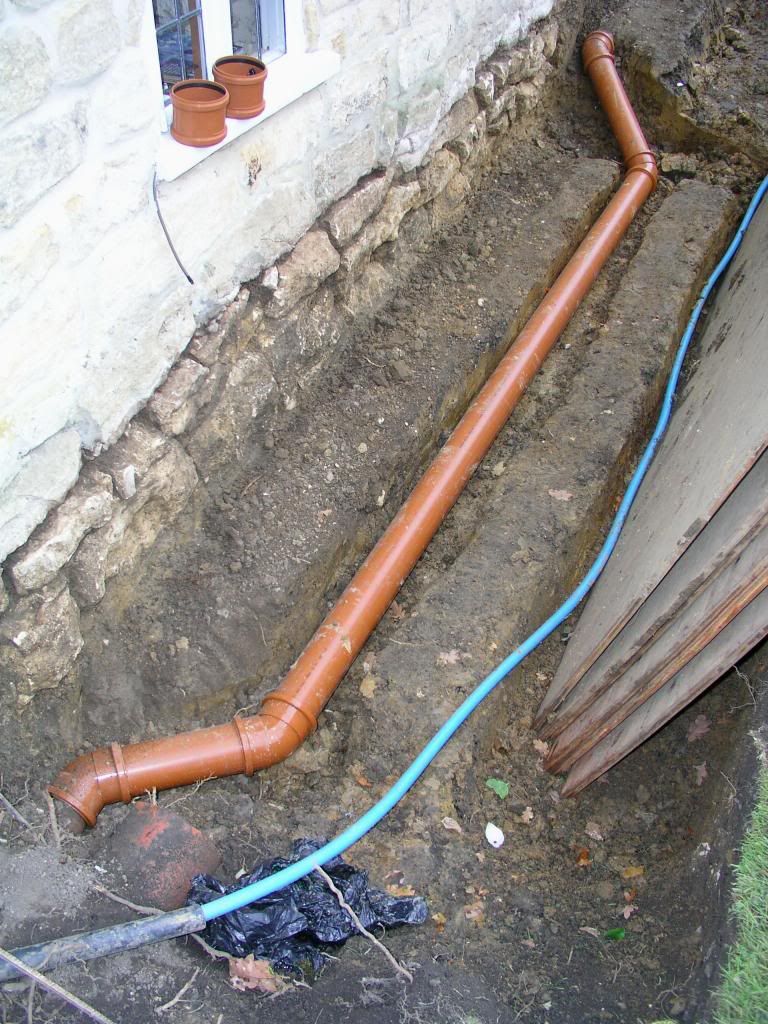
Fortunately, the land slopes not only from back to front but also from right to left, so there is enough fall. Even more fortunately, 4" plastic perfectly fits the 3" clay. The drain segments, incidentally, are just butted end to end. The soil is so stiff, the pipes don't move. According to the local farmer, this is typicalof how local land drains were made.
At the left-hand end, the notion of getting down to floor level was scuppered; the floor is 38" below datum, but when we had dug down to 34", the external wall stopped. The builders of long ago hadn't bothered to make a uniform flat foundation for the inner and out walls, they just stepped the slope, and started the outer wall about a foot above the base of the inner wall. A foot, you may say? Yes, because the inner wall continues for about 6" below the floor, so that's 44" below datum. Well, OK, it's a 10" difference, not 12", but let's cut ourselves some slack, the stones aren't exactly flat along the bottom.
Anyway, now we come to the crux of this post. I cleaned the clay off the uncovered lower wall, to see how much repointing was needed. There was no pointing. Nothing. They'd just shoved the stone up against the slope, and backfilled with clay.
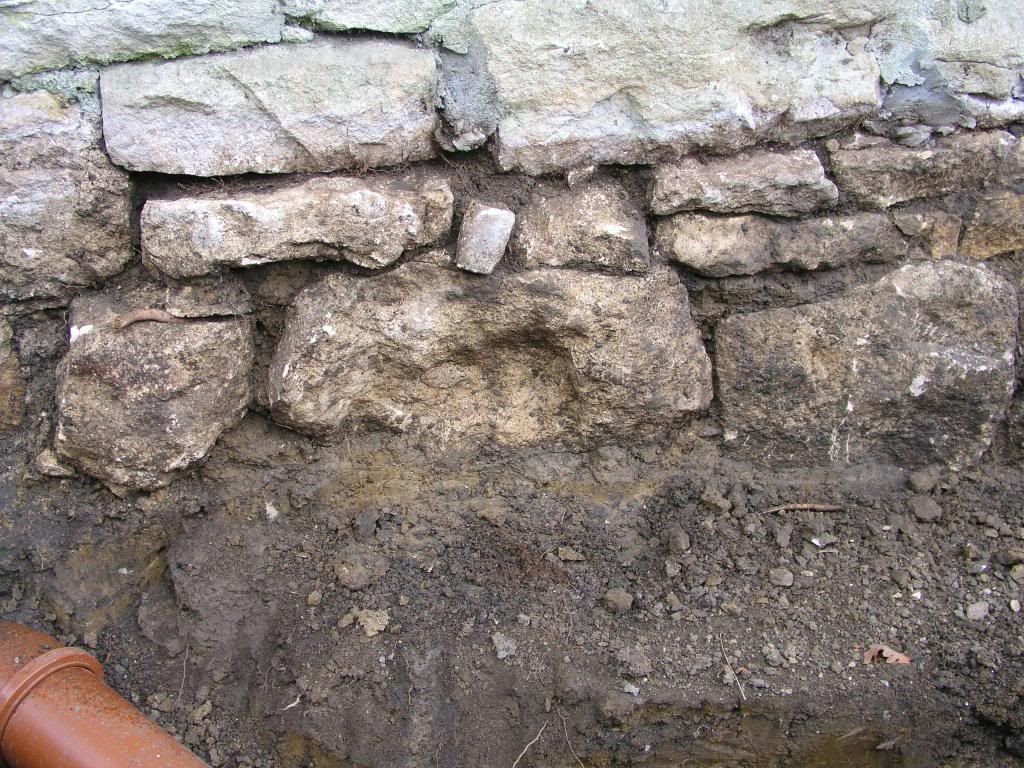
So here I am with a very rough wall with huge gaps. And, there's no mortar. Well, I knew that, but it makes pointing more 'interesting' because there's no sound surface to get back to - the stones were bedded in clay, and if I kept scraping, or washing with the sprayer, I could just go on removing the clay until the wall collapses.
How to get the joints clean enough to point? Or does it not really matter? :?
I plan to use NHL5 in a 5:1 mix with sharp sand. Where the gaps are large I'll insert some pinning stones.
Any thoughts?
Ivor

But all is not well.
On the right, the ground is a foot above floor level, to the left it's two feet. Damp, mould.

Not as bad as it might be, the walls are in effect two separate drystone walls with rubble infill, so damp transmission is to an extent prevented.
However, despite great reluctance to destroy this lovely flowerbed, we removed what we could in the way of plants - 20 year-old sweet peas can't be moved - and then we set about digging it out. Or rather, three chaps did, one shovelling, two carrying wheelbarrows up and down the steps, about 10 tons of soil to go out, then 12 tons of stone and pea and shingle to come in. The pea and shingle is because we're putting a land drain along the drip line, and the stone is for a drystone retaining wall.
And none of the three blokes is Polish.
Along the back we find an old 6" land drain, full of earth and roots. And the remains of a cobble path, stone-on-edge, that had been put in later, and then adjacent to the house a 3" land drain, apparently still active. Luckily, we had a dry week, next week not so good.
Obviously, we wanted to get down to internal floor level so the land drain on the left had to be taken up. Here are some of the 6" and 3" clay pipes.

Then the 3" had to be repiped.

Fortunately, the land slopes not only from back to front but also from right to left, so there is enough fall. Even more fortunately, 4" plastic perfectly fits the 3" clay. The drain segments, incidentally, are just butted end to end. The soil is so stiff, the pipes don't move. According to the local farmer, this is typicalof how local land drains were made.
At the left-hand end, the notion of getting down to floor level was scuppered; the floor is 38" below datum, but when we had dug down to 34", the external wall stopped. The builders of long ago hadn't bothered to make a uniform flat foundation for the inner and out walls, they just stepped the slope, and started the outer wall about a foot above the base of the inner wall. A foot, you may say? Yes, because the inner wall continues for about 6" below the floor, so that's 44" below datum. Well, OK, it's a 10" difference, not 12", but let's cut ourselves some slack, the stones aren't exactly flat along the bottom.
Anyway, now we come to the crux of this post. I cleaned the clay off the uncovered lower wall, to see how much repointing was needed. There was no pointing. Nothing. They'd just shoved the stone up against the slope, and backfilled with clay.

So here I am with a very rough wall with huge gaps. And, there's no mortar. Well, I knew that, but it makes pointing more 'interesting' because there's no sound surface to get back to - the stones were bedded in clay, and if I kept scraping, or washing with the sprayer, I could just go on removing the clay until the wall collapses.
How to get the joints clean enough to point? Or does it not really matter? :?
I plan to use NHL5 in a 5:1 mix with sharp sand. Where the gaps are large I'll insert some pinning stones.
Any thoughts?
Ivor
